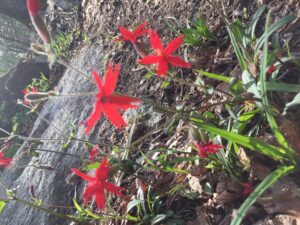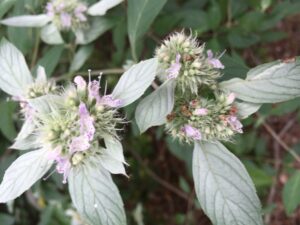Avoid Invasive Plants, Utilize Native Plants
go.ncsu.edu/readext?813447
en Español / em Português
El inglés es el idioma de control de esta página. En la medida en que haya algún conflicto entre la traducción al inglés y la traducción, el inglés prevalece.
Al hacer clic en el enlace de traducción se activa un servicio de traducción gratuito para convertir la página al español. Al igual que con cualquier traducción por Internet, la conversión no es sensible al contexto y puede que no traduzca el texto en su significado original. NC State Extension no garantiza la exactitud del texto traducido. Por favor, tenga en cuenta que algunas aplicaciones y/o servicios pueden no funcionar como se espera cuando se traducen.
Português
Inglês é o idioma de controle desta página. Na medida que haja algum conflito entre o texto original em Inglês e a tradução, o Inglês prevalece.
Ao clicar no link de tradução, um serviço gratuito de tradução será ativado para converter a página para o Português. Como em qualquer tradução pela internet, a conversão não é sensivel ao contexto e pode não ocorrer a tradução para o significado orginal. O serviço de Extensão da Carolina do Norte (NC State Extension) não garante a exatidão do texto traduzido. Por favor, observe que algumas funções ou serviços podem não funcionar como esperado após a tradução.
English
English is the controlling language of this page. To the extent there is any conflict between the English text and the translation, English controls.
Clicking on the translation link activates a free translation service to convert the page to Spanish. As with any Internet translation, the conversion is not context-sensitive and may not translate the text to its original meaning. NC State Extension does not guarantee the accuracy of the translated text. Please note that some applications and/or services may not function as expected when translated.
Collapse ▲The winters in Western North Carolina are warmer now and summers are not as mild as in the past. There was a time when ponds would freeze over in the winter and soil was so frozen that people couldn’t bury folks in the winter time.
Without freezing winter temperatures to kill off plants and insects that thrive in warmer climates, native mountain ecosystems are under threat. Native plants can suffer while invasive plants thrive. Even ponds are under threat from new invasive plants and warmer temperatures.
A great way home gardeners can address potential landscape issues is to embrace native species. We have too many beautiful native plants to replace them with plants from outside the area that may not grow as well or may become invasive.
Some plants, such as miscanthus grass, may not be terribly invasive in other areas of the country but become invasive when they are transplanted to the mountains. Other plants such as English ivy and Oriental bittersweet may be more easily contained in other areas of the country but spread like wildfire in the mountains.
English ivy is very invasive in Western North Carolina. The plant competes with tree roots, chokes out native ground covers and flowers, and in the long run kills trees. Learn more about English ivy by reading this article by my colleague.
Western North Carolina is one of the best growing areas in the world. Native plants will thrive here if they don’t have to compete with invasive plants. As the climate changes and the winters get milder, invasive species will thrive and continue to push out native species. As gardeners, let’s do what we can to promote native plants and kill invasive plants.
Here is a great list of native plants from the NC Native Plant Society.
Here is a list of invasive plants in North Carolina.







